Create Word and PDF documents from Cognito Forms in Power Automate
In this article, you will learn how to automate the generation of documents in your company. For example, applications, orders, invoices, cards and others. We’ll show you how to create a PDF document from a DOCX template on a Cognito Form submission with the help of Processes in Power Automate (Microsoft Flow) and Azure Logic Apps.
Processes are a Plumsail Documents feature with an intuitive interface for creating documents from templates.
Cognito Forms are an online form builder that allows you to create powerful forms for your website.
We’ll connect them in Power Automate (Flow) to automatically collect data from a Cognito Form, apply it to our template, and generate a new PDF document.
Create a Form
We have already created a Cognito Form. We will use data from its submission. If you haven’t created Cognito Forms before, follow this link to learn how to do it.
Below is a screenshot of our form:
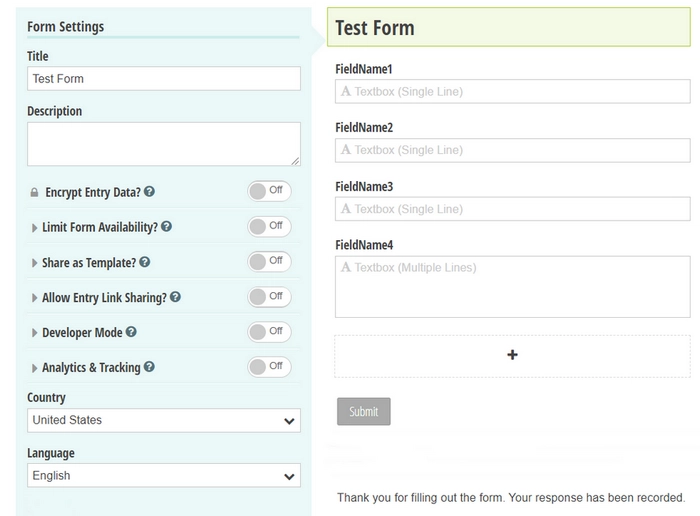
Configure the Process
Before creating the Flow, we need to set a Process, which will generate PDF documents from a DOCX template.
Create a new process
Go to the Processes section in your Plumsail account.
Click on the Add process button.

Set the Process name. Select DOCX for a template type.
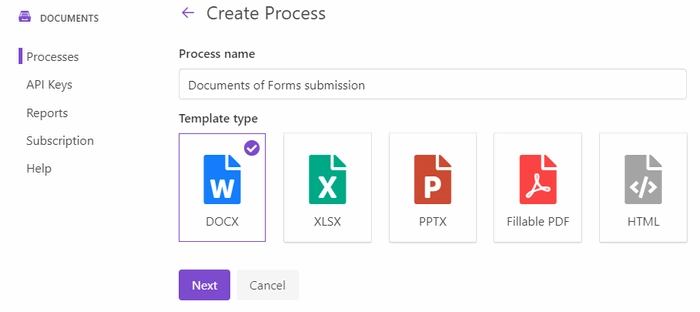
Configure a template
Once you’re done with the first step Create Process, press the Next button, and you’ll proceed to the next step – Configure Template.
It includes two substeps:
Editor;
Settings.
In Editor, you can compose the template from scratch or upload a pre-made one. It’s also possible to modify the uploaded template online.
Feel free to download a DOCX template that we’re using in this example for demonstration purposes:

Then upload it to the process.
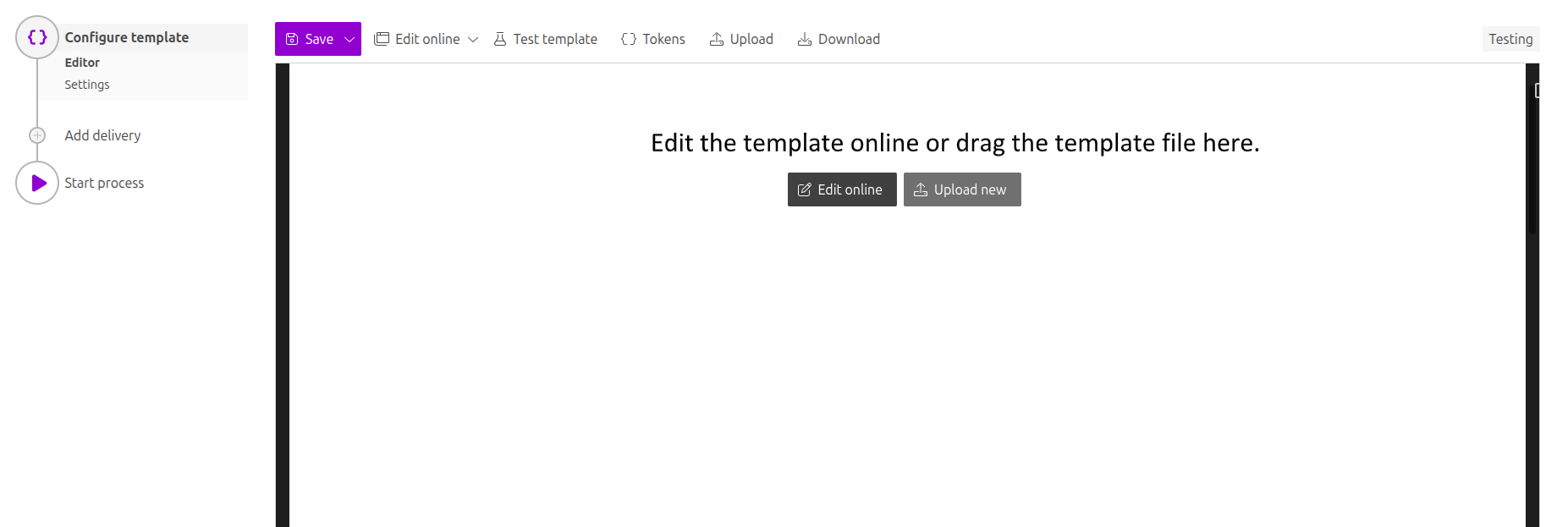
Tempating syntax
When creating your own templates, mind the templating language. Plumsail Word DOCX templates use a different approach than most other templating solutions. It uses a minimal amount of syntax to make your work done.
In short, the templating engine thinks that everything between curly {{ }} brackets is variables where it will apply your specified data.
Read this article to get familiar with the templating engine.
Test template
You can test a template as well, to see how it will look at the end. After clicking on the Test template button, you’ll need to fill in the auto-generated testing form. Fields of this form are created based on tokens from your document template. You can adjust the look of the testing form by changing token types.
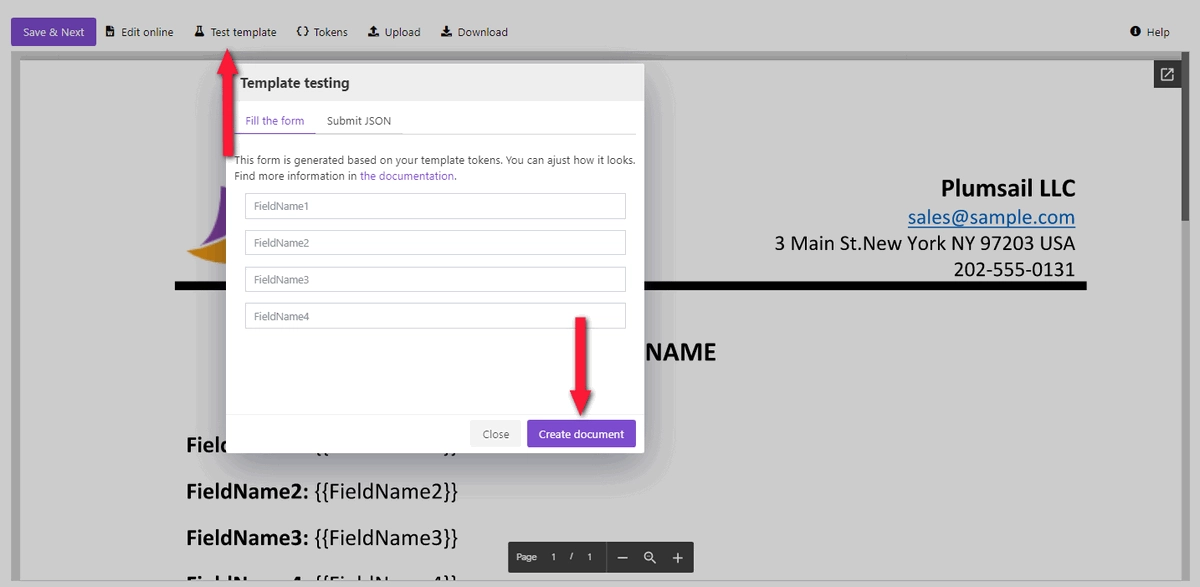
It’s testing. We’re going to apply the data from the Cognito form to our template.
Once you’ve tested the template, press Save&Next to proceed further - to the Settings substep.
Switch to an active mode to remove Plumsail watermarks from resulting documents
Fill in the name of the result file
Select PDF format for the output file
Protect the result PDF if you wish
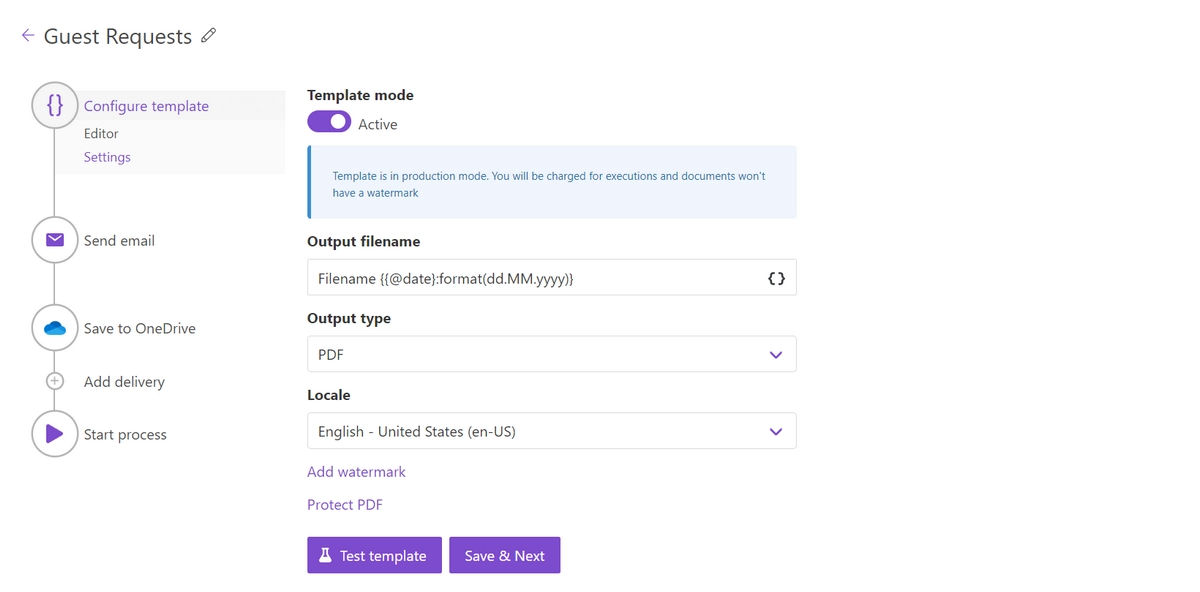
Delivery
The next step is delivery. For demonstrating purpose, we’ll store the result file in OneDrive. But there are other options.
Select the folder where the ready document will be saved. Fill in the file’s name.

You can configure as many deliveries as you need.
Start the Process
We will start our Process from Power Automate (Microsoft Flow).
Create a Flow
This is how our Flow looks:
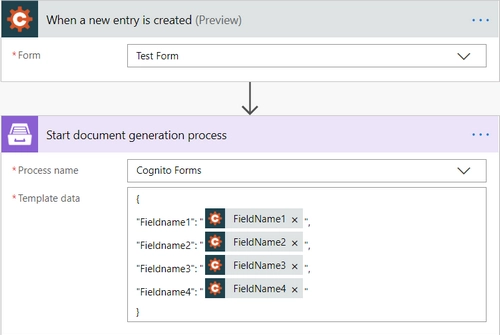
Check out the Flow steps described below.
Flow trigger
We need to start the Flow every time somebody submits our Cognito Form. For that, search for Cognito Forms in Power Automate and set Cognito Forms - When a new entry is created as a trigger.
If this is your first Flow with Cognito Forms, on this step, sign in to your Cognito Account from MS Flow to use your forms inside Flows.
Then, you’ll need to pick the form you want to track in the dropdown.

Start document generation process
This is the action from Plumsail Documents connector. This action is suitable for starting the Process of generating documents from a template. You can find more information about this action by visiting this page.
Using the action for the first time, you’ll be asked for ‘’Connection Name’’ and ‘’Access Key’’.
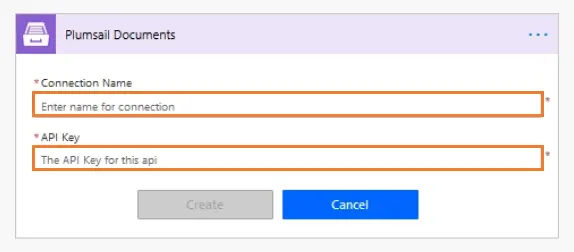
You can type any name for the connection. For example, ‘’Plumsail Documents’’.
Then create an API key in your Plumsail Account page, copy and paste it to ‘’Access Key’’ field.
The action has two parameters:
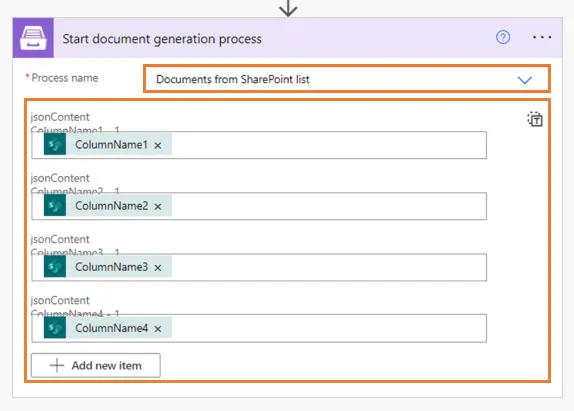
Process name. Select the process you need from available ones.
Template data. Specify source data in JSON format:
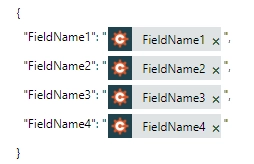
This object contains information from our form. We selected the dynamic content from the output of Cognito Forms - When a new entry is created action:
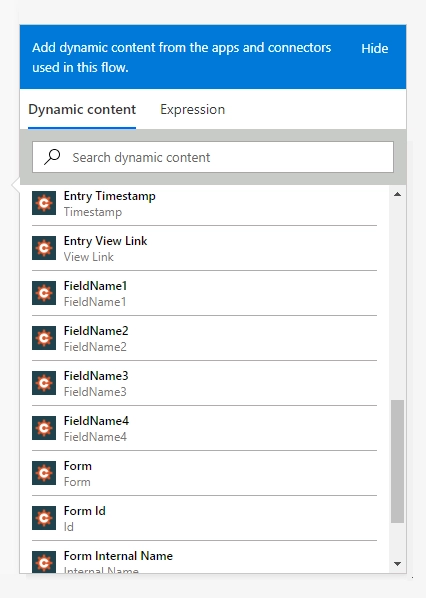
Use the result document in Flow
You can stop on the step Start document generation process.
Steps described above are enough for generating PDFs from a DOCX template based on the Cognito Form submission. Your result file will be saved to OneDrive in this case. See how it will look:
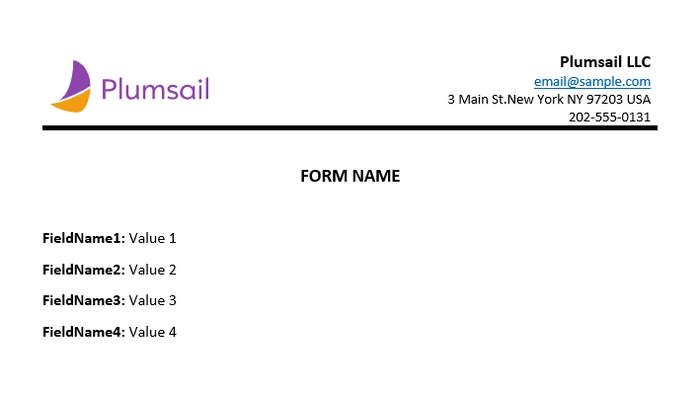
But if you need an advanced logic, it’s possible to work with the result file right in the Flow.
Here is an example of how you can send the ready document for approval.
Add an action Create an approval from the Approvals connector. Select an output of the previous step for an attachment.
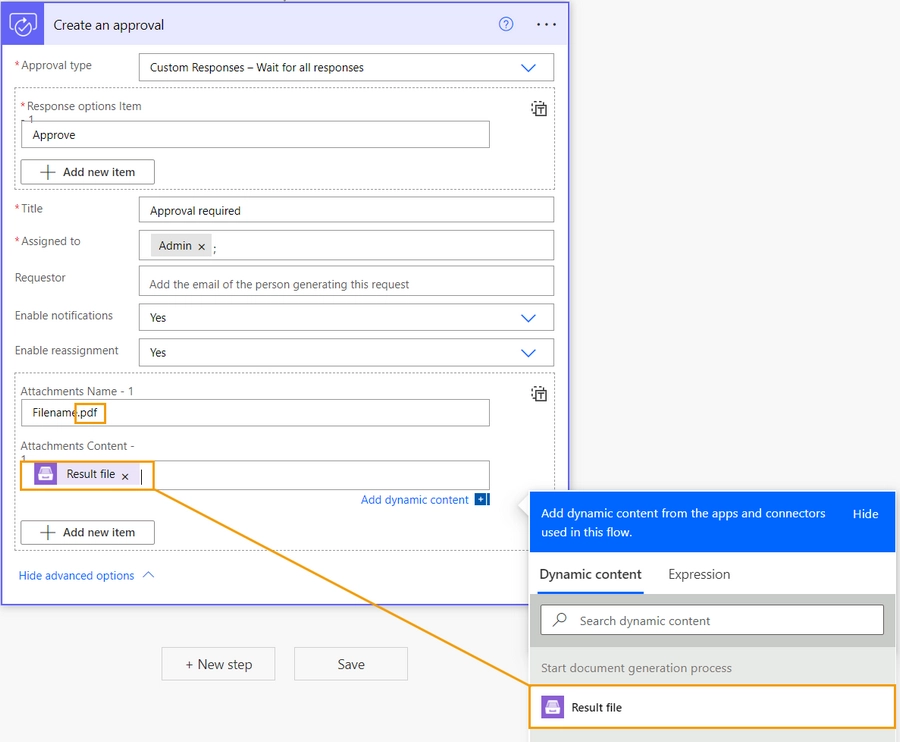
Sign up for Plumsail Documents
As you can see, it’s simple to automize the generation of documents on Cognito Forms submission. If you’re new to Plumsail Documents, register an account to get a free 30-day trial.